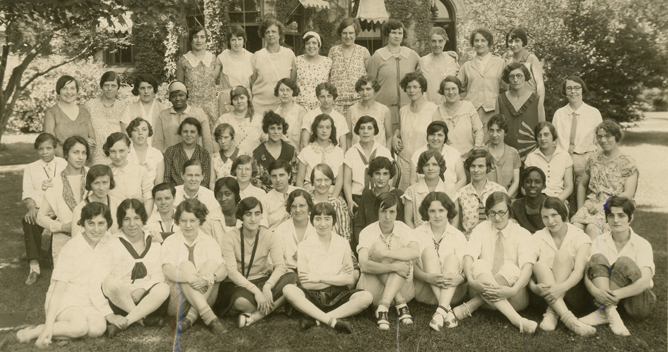Applying Digital Research Tools to Feminist Art
Speaker Bio
Margo Hobbs Thompson teaches modern and contemporary art history at Muhlenberg College in Allentown, PA. She directs the Humanities Seminar there, and plans to develop a year long program exploring the digital humanities for faculty research and pedagogy. She has published on feminist art and sensibilities in Genders, GLQ, and the Journal of Lesbian Studies. She has presented her recent research on feminist erotica and the feminist gaze at the Northeast Modern Language Association conference, the National Women's Studies Association conference, and the Feminist Art History Conference.
Abstract
Digital tools have advanced my research that will culminate in a book length manuscript on the "feminist gaze" articulated by feminist artists working concurrently with the Women's Movement. Beginning in the early 1970s, a feminist gaze was articulated by feminist artists. Hannah Wilke, Louise Fishman, Harmony Hammond, and Tee A. Corinne intervened subversively into dominant spectatorial discourse of the male gaze, as described by Laura Mulvey in "Visual Pleasure and Narrative Cinema." This development is recorded as well in the myriad feminist and lesbian-feminist art journals that were published throughout the US. My research has so far suggested three categories of representation where a feminist gaze is evident: images that deflect the exploitative masculine gaze, images that invite the desiring lesbian gaze, and images that overturn the masculine gaze's hegemony.
I have conducted research in digitized archives and using digital research to locate nondigital resources. Flickr allows images to be tagged, annotated, compared, and sorted. Zotero supports my text-based research, where I am constructing an updated bibliography on representation, gender, and sexuality; and a theoretical framework to support my hypothetical feminist gaze.
Applying Digital Research Tools to Feminist Art
Digital tools have advanced my research that will culminate in a book length manuscript on the "feminist gaze" articulated by feminist artists working concurrently with the Women's Movement. Beginning in the early 1970s, a feminist gaze was articulated by feminist artists. Hannah Wilke, Louise Fishman, Harmony Hammond, and Tee A. Corinne intervened subversively into dominant spectatorial discourse of the male gaze, as described by Laura Mulvey in "Visual Pleasure and Narrative Cinema." This development is recorded as well in the myriad feminist and lesbian-feminist art journals that were published throughout the US. My research has so far suggested three categories of representation where a feminist gaze is evident: images that deflect the exploitative masculine gaze, images that invite the desiring lesbian gaze, and images that overturn the masculine gaze's hegemony.
I have conducted research in digitized archives and using digital research to locate nondigital resources. Flickr allows images to be tagged, annotated, compared, and sorted. Zotero supports my text-based research, where I am constructing an updated bibliography on representation, gender, and sexuality; and a theoretical framework to support my hypothetical feminist gaze.
